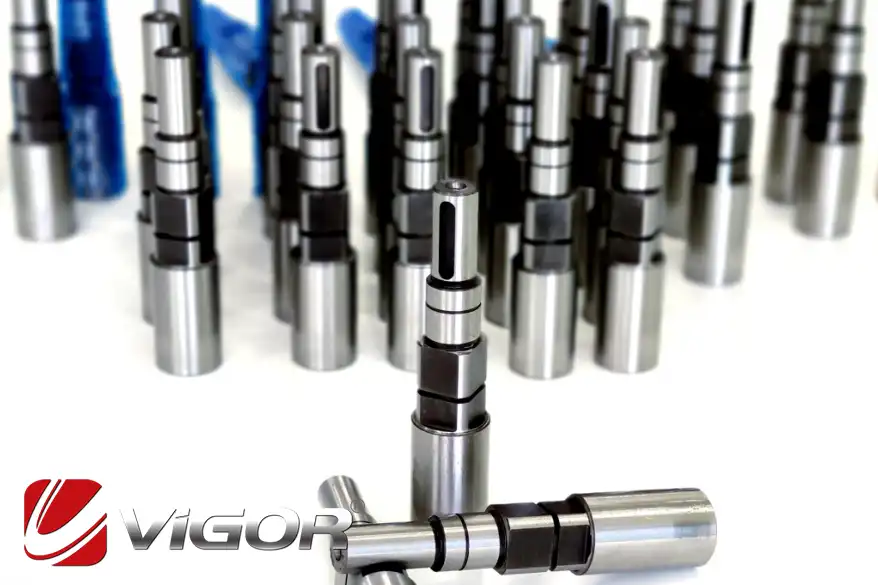
Knowledge
Material Selection and Characteristic Analysis of Motor Shaft
Principles for Selecting Motor Shaft Materials
As a core component of the motor, the motor shaft has stringent performance requirements: it must possess high strength, excellent stiffness, and superior wear resistance to ensure stability during high-speed rotation while minimizing excessive heat generation and vibration. Therefore, when selecting materials for the motor shaft, the following aspects should be considered:
- Microstructure and Grain Size: A finer microstructure with smaller grain size typically indicates higher strength and hardness, which can effectively mitigate the risk of fatigue and thermal fatigue fractures.
- Heat Resistance: During high-speed rotation, friction can cause significant heat generation and increased surface temperature. It is essential to select materials that exhibit excellent high-temperature resistance and thermal fatigue performance.
- Wear Resistance: High-speed rotation subjects the motor shaft to severe wear. Materials with higher hardness and superior wear resistance are necessary to withstand these conditions.
- Machinability: Given the complex structure and precise processing requirements of the motor shaft, materials that are easy to machine and have good formability should be chosen.
- Cost Considerations: Material selection should balance actual application needs with economic costs to ensure cost-effectiveness.
Characteristics of Various Materials
- C45: This material is characterized by its low cost and favorable processing properties, making it suitable for applications with low load and low speed. However, due to its relatively low strength and hardness, it is not recommended for high-load or high-speed environments.
- 40Cr: Known for its high strength and hardness, this material is ideal for medium to high load and medium to high speed applications. However, its poor welding performance necessitates special treatment during fabrication.
- 20CrMnTi: With superior strength and hardness, this material is the preferred choice for high-load and high-speed operating conditions. It also exhibits excellent heat resistance and hardenability.
- 42CrMo4: This material is used in the production of forgings that require higher strength and larger tempering cross-sections compared to 35CrMo steel, such as large gears for locomotive traction, supercharger transmission gears, rear axles, highly loaded connecting rods, and spring clips.
- 20MnCr5: As an alloy structural steel and carburized steel, this material offers high strength and toughness, along with excellent hardenability. After heat treatment, its performance surpasses that of 20Cr steel. Additionally, it features minimal quenching deformation, good low-temperature toughness, and improved machinability, although its welding performance is relatively low. It is typically used after carburizing and quenching or tempering.
- Stainless steel exhibits superior corrosion resistance, making it ideal for wet, corrosive environments and high-temperature applications. However, its strength and hardness are relatively low.
- AISI 431 stainless steel, also known as SS431, is a martensitic stainless steel with certain magnetic properties, rendering it suitable for magnetic applications. It is renowned for its high strength, hardness, and excellent corrosion resistance, and is extensively utilized in the manufacture of bearings, bolts, valves, shafts, and other mechanical components. Due to its exceptional wear resistance, it is particularly well-suited for high-load and high-wear environments. For instance, the AISI 431 motor shaft produced by Vigor has a hardness range of 25HRC to 48HRC, which can be further enhanced through specialized surface treatments such as quenching and tempering. The chemical composition of AISI 431 stainless steel includes 15.00-17.00% chromium and 1.25-2.50% nickel, contributing to its outstanding corrosion resistance, especially in chloride environments. Additionally, it possesses good wear and fatigue resistance, making it suitable for manufacturing parts that require high strength and wear resistance, such as bearings, valves, and pump shafts.
- Cemented carbide boasts high hardness and wear resistance, making it appropriate for high-speed, high-load, and harsh environments. However, it presents challenges in processing and incurs higher costs.
In summary, the selection of materials for motor shafts must take into account various factors, including mechanical properties, heat and wear resistance, and processability. A comprehensive evaluation will facilitate the choice of suitable materials, thereby effectively enhancing the service life and operational efficiency of the motor shaft.
If you have any question, demand, new parts development or improve your supply chain, please feel free to contact us info@castings-forging.com
China Vigor Drilling Oil Tools and Equipment Co, Ltd was registered in 2008 in Xi'an, history can be traced back to 30 years from downhole tools production for the domestic oil and gas fields.
With years of working experience in innovation, a series of products have been launched including Disposable Perforating Gun System, Composite Frac Plug, Dissolvable Frac Plugs, Non-Explosive Electro-Hydraulic Setting Tools, High Precision Self North Seeking Gyro, Gyro MWD, Segmented Memory Cement Bond Tool and much more under development. Vigor upholds the principle of technological innovation to fulfill industry needs and solve problems for our customers.
Vigor expanded our manufacturing facilities in different locations of China which help us to serve the customers with swift delivery, diversity and efficiency of production. All our manufacturing facilities meet and exceed APl and international quality standards.
Vigor is always your reliable partner in the oil and gas industry.




